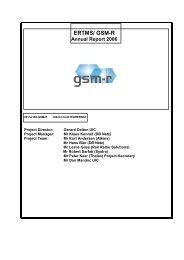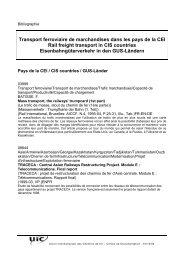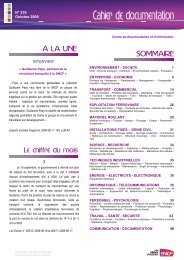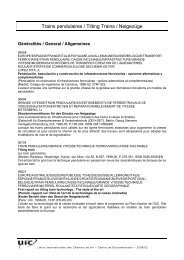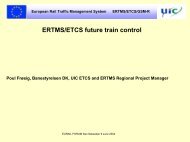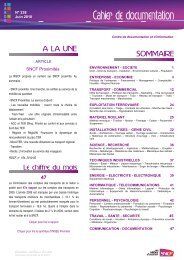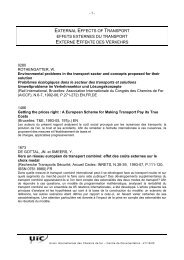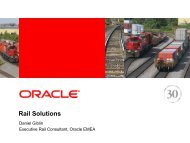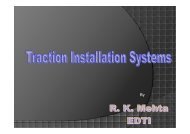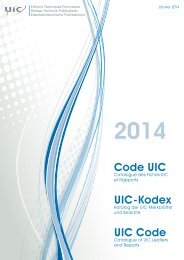UIC Project Annual Report - ERTMS
UIC Project Annual Report - ERTMS
UIC Project Annual Report - ERTMS
- No tags were found...
You also want an ePaper? Increase the reach of your titles
YUMPU automatically turns print PDFs into web optimized ePapers that Google loves.
ETCS<strong>UIC</strong> code I/92/E/051<strong>Annual</strong> <strong>Report</strong> 2004 DOCUMENT CODIFICATION REV. PAGEC 12 of 21handed over to UNISIG with the request to study and comment on the proposal and have thelevel crossing function introduced in version 3.0.0 of the SRS to be referenced in Annex A of theTSI CCS. IT has been agreed at the AEIF change request level (CCB) in the summer of 2004that the level crossing functionality will be included in the next version 3.0.0. of the ETCS SRSspecification.2.3.9.4 Awakening in level 1 on EUROLOOPAt the AEIF CCB meetings in January and April 2004, the Danish autorithies introduced achange request regarding awakening in level 1 on EUROLOOPs. It was concluded that the level2 awakening problems discussed in <strong>ERTMS</strong> Users Group should be combined with the level 1problems as they are indicated in the Danish change request, so that a total awakeningphilosophy for level 1 as well as level 2 can be developed. The process is developing andscenarios and explanatory documents are under elaboration by the EEIG. The basic problemfor Denmark is that such a function is incorporated in the Danish ZUB system in operation on allDanish trains and ETCS would therefore in the awakening operation be less safe than theexisting class B system.2.3.9.5 New ETCS mode “Limited SupervisionSeveral years ago, this mode was introduced as a change request by RFF/SNCF based on anSBB proposal. It was agreed at the ETCS / ETCS-LC Steering Group meeting in the spring of2004 to arrange a workshop on this topic in order to create a better understanding for the use ofthis mode in a transition towards a full level 1 or 2. The introduction of this mode would alsoreduce the amount of different STM's onboard as the mode should be considered interoperable.Therefore, for several countries it is important to have this mode introduced in the ETCSspecifications as soon as possible, so that the planning of the transitions can be undertakenand tests can be carried out. For some central European countries who have INDUSI in servicetoday, and especially for Switzerland as a transit country, this is important. It should bementioned that CFR and the ETCS project has developed a transition from INDUSI I 60 towardsETCS for the Romanian part of the Corridor IV line. This concept could also be used for othercountries in the Balkan region.After the <strong>UIC</strong> workshop held on 30 June 2004, is was agreed that <strong>UIC</strong> should produce an FRSdocument (chapter) as the first step and as a stand-alone document, but prepared so that thischapter could be incorporated into the next version of the FRS without e.g. creating newconformity problems.In Limited Supervision mode, it shall be possible to use only the emergency brake for being ableto mirror certain existing protection systems that today only have the emergency brakeapplication. Thereby, also the use of the existing relays as input for the balise (a very simplifiedLEU SIL level 0 or 1) shall be possible.The FRS chapter has been distributed for comments to the 8 railway administrations whichwere identified at the workshop. The administrations are ÖBB, SNCB / NMBS, BDK(Banedanmark), DB, RFI, CFR, Network Rail, and SBB.



